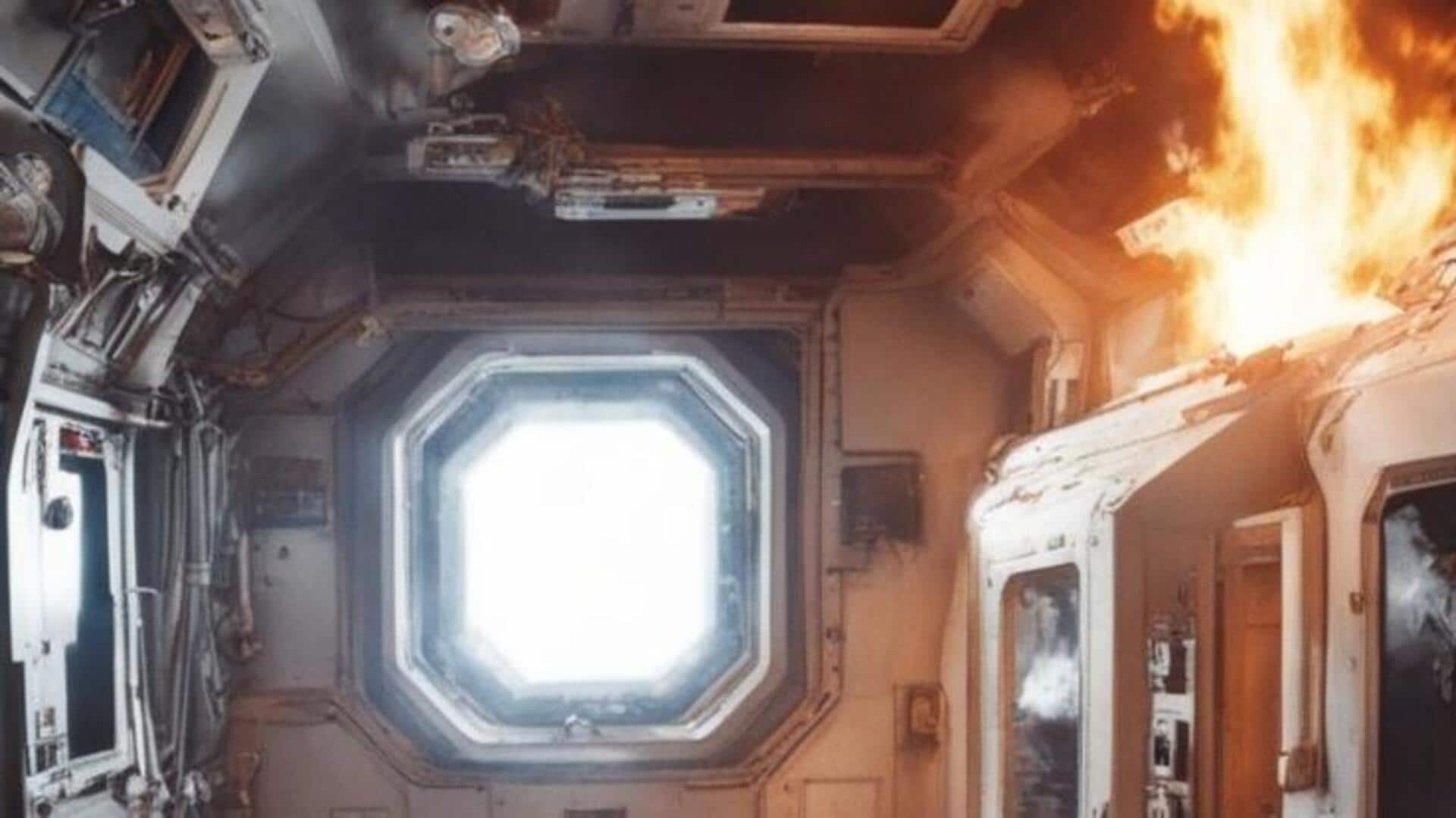
Why fire during space missions is an astronaut's worst nightmare
What's the story
Scientists from the Center of Applied Space Technology and Microgravity (ZARM) at the University of Bremen, have explained why fire poses a significant risk during space missions. According to a study published in Proceedings of the Combustion Institute, fire behaves differently in microgravity conditions, like on the International Space Station, compared to Earth. "A fire on board a spacecraft is one of the most dangerous scenarios in space missions," said Dr. Florian Meyer, head of ZARM's Combustion Technology research group.
Space fires
Understanding fire behavior in microgravity
Meyer emphasized the limited options for astronauts to escape or find safety during a spacecraft fire, underscoring the importance of understanding fire behavior in microgravity. The study, "Effect of oxygen concentration, pressure, and opposed flow velocity on the flame spread along thin PMMA sheets," led by Hans-Christoph Ries, has been exploring this topic since 2016. The researchers discovered that fires initially burn with smaller flames and spread slower in microgravity, but burn hotter than on Earth.
Mars
Fire risks in future Mars missions
The ZARM team also examined fire behavior under conditions likely to be encountered on future Mars missions. These spacecraft will have lower ambient air pressure than the ISS, making them lighter and allowing astronauts to prepare for external missions faster. However, this lower pressure necessitates a higher oxygen content to meet astronauts' respiration needs, which could impact how fires behave in these environments.
Experiment results
Fire behavior under different atmospheric conditions
The researchers used polymethyl methacrylate (PMMA), or acrylic glass foils, in their experiments due to its common use in spacecraft construction. They varied oxygen content, ambient pressure, and flow velocity, using the Bremen Drop Tower to simulate microgravity. The results showed that while lower ambient pressure dampens the fire, higher oxygen content significantly increases its power. Future spacecraft bearing lower ambient pressures could have oxygen levels as much as 35%, compared to the ISS's 21%.
Safety protocols
Implications for fire safety in space missions
The increase in oxygen levels could lead to fires spreading three times faster than under Earth conditions. "Our results highlight critical factors that need to be considered when developing fire safety protocols for astronautic space missions," said Meyer. He stressed the importance of understanding how flames spread under different atmospheric conditions, to mitigate fire risks and improve crew safety on future space missions.